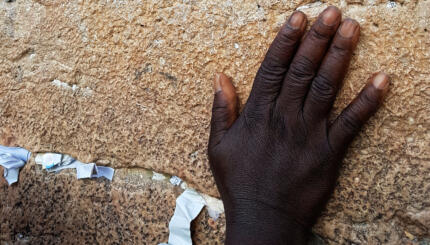The two issues that dominate the conversion landscape today arise from fundamental differences in how the four major Jewish movements—Orthodox, Conservative, Reform, and Reconstructionist — view Judaism and its role in the world
Kosher Conversion
The first issue involves the clash between the movements over what constitutes an acceptable, or “kosher,” conversion. Most traditional rabbis require a strict implementation of rabbinic law while liberal rabbis may temper the requirements based on current social realities and individual choice. The fault line between the movements over conversion has diminished Jewish unity, because most Orthodox rabbis do not recognize conversions performed by rabbis of the liberal movements
Proselytising
The second issue involves the appropriateness of outreach and even active proselytism–especially to non-Jews who are married to Jews. Most Orthodox and Conservative Jews follow the historically imposed tradition against proselytism, yet some liberal Jews feel impelled by a sense of mission, sharpened by current demographic realities, to reach out to non-Jews
Orthodox Judaism generally interprets Talmudic law on conversion strictly, requiring that a conversion candidate accept all applicable commandments; that the conversion be approved by a beit din, or rabbinic court, of Orthodox rabbis and observant Jews; and that circumcision or hatafat dam brit (the symbolical taking of a drop of blood) as well as immersion in a mikveh (ritual pool) take place. For most Orthodox rabbis, the only acceptable motive for conversion is the desire to embrace Judaism for its own sake, although some allow conversion for the sake of marriage.

Help us keep Jewish knowledge accessible to millions of people around the world.
Your donation to My Jewish Learning fuels endless journeys of Jewish discovery. With your help, My Jewish Learning can continue to provide nonstop opportunities for learning, connection and growth.
In the Reform and Reconstructionist movements, the requirements for conversion are generally far more flexible, with specific procedures left to the discretion of the sponsoring rabbi. (To further complicate matters, the Reform and Reconstructionist movements consider children with only one Jewish parent to be Jewish, as long as they are raised as Jews, whereas traditionally only the children of a Jewish mother are considered to be Jewish.) Generally the liberal movements are also willing to accept marriage as a motivation for conversion, believing that such a conversion will strengthen the marital relationship and that many who convert for marriage eventually become truly dedicated Jews, gerei tzedek.
The Conservative movement takes a middle ground on conversion, falling more with Reform and Reconstructionist Judaism on selective acceptance of the commandments and greater flexibility about motivations, yet leaning more toward Orthodoxy in terms of required ritual procedures. Conservative rabbis share with other liberal rabbis the commitment to accept conversions performed under the auspices of any movement, for the sake of klal Yisrael (Jewish unity).
In contrast to the rabbinic establishment in Israel, which strictly limits conversion, a number of American rabbis are promoting outreach to non-Jews, particularly those married to Jews but even to the broader community. Adherents of outreach claim that Judaism historically supported proselytism, based on its mission to be a light unto the nations, and only stopped actively seeking proselytes when Christian and Muslim rulers outlawed conversion to Judaism. Yet many traditional as well as liberal Jews are uncomfortable with outreach, holding that the Jewish tradition urges Jews to discourage potential converts, not seek them out. They may agree that Judaism’s mission is to spread ethical teachings to gentiles, but do not feel it is necessary to convert them.
Conversion in Israel
In Israel, the conversion issue takes on additional shades of gray. Although the Orthodox rabbinic establishment has been legally required to accept all conversions performed in the Diaspora, within Israel itself the Chief Rabbinate retains control of conversion and, therefore, who is or is not considered by the state to be a Jew. The Orthodox control over conversion limits freedom of religious expression in the state of Israel and has serious repercussions for the 200,000 non-Jews in Israel from the former Soviet Union, some of whom are interested in converting under the auspices of the liberal movements and not through the Orthodox establishment.


